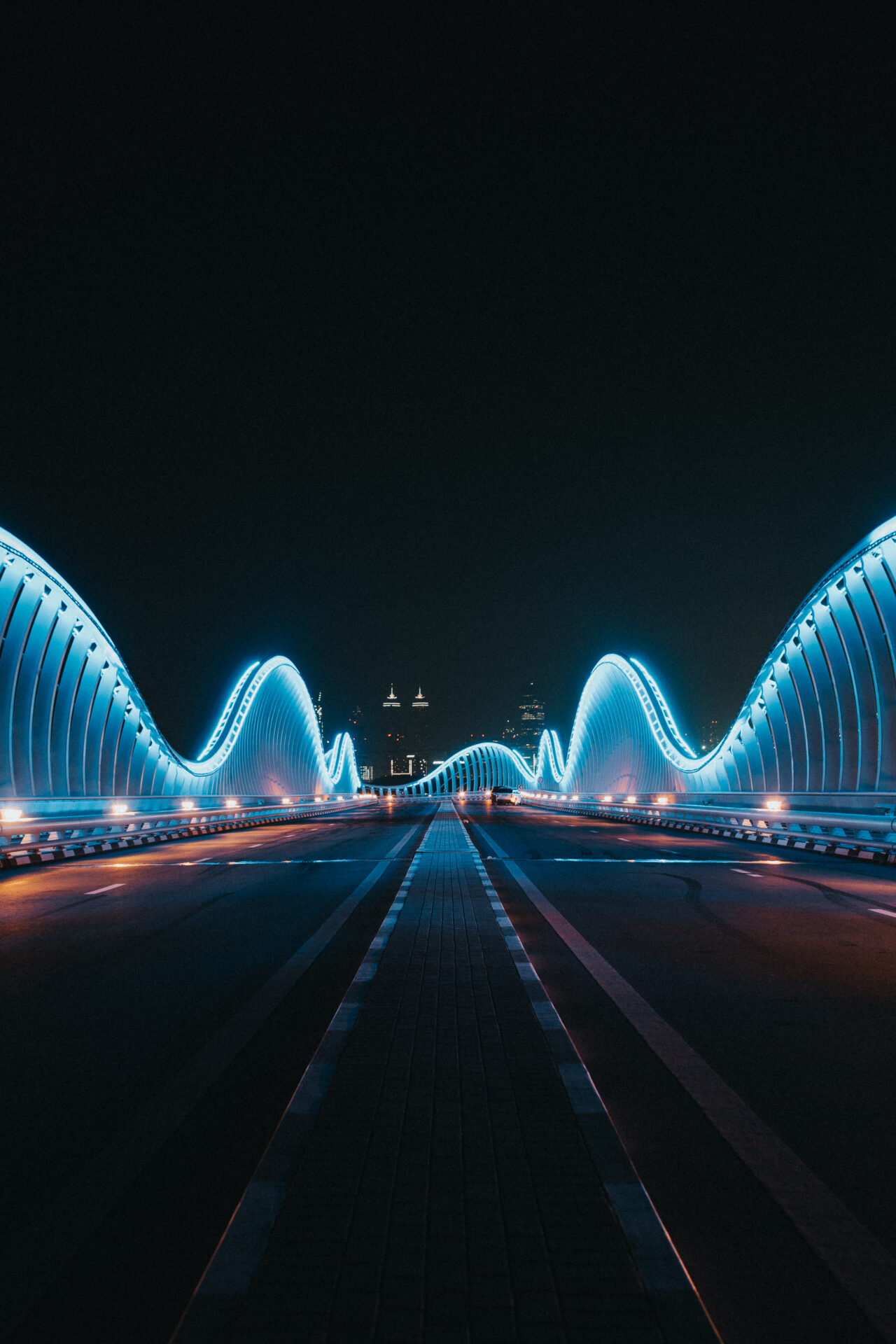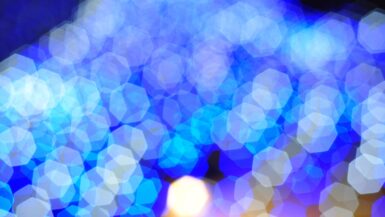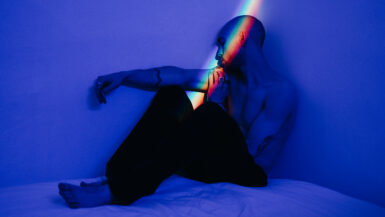In today’s technology-driven world, the pervasive presence of blue light from digital devices and artificial lighting has become an inevitable aspect of our daily lives. In this article, we delve into the multifaceted influence of blue light on critical aspects of human cognitive functioning, such as learning and memory, and how it ultimately impacts our sleep patterns and overall productivity. Drawing on the latest scientific research, we aim to provide an in-depth understanding of the physiological and psychological implications of blue light exposure, and offer valuable insights into mitigating its adverse effects. By addressing these concerns, we strive to empower our readers with the knowledge to enhance their cognitive performance and make informed decisions on the role of blue light in their everyday life.
Tips for Reducing Blue Light Exposure
As we delve deeper into the effects of blue light on learning and memory, it becomes crucial to identify practical strategies for mitigating its impact on our lives. In this section, we offer a comprehensive guide to reducing blue light exposure, focusing on various aspects such as digital device usage, lighting solutions, and lifestyle choices. By implementing these tips, you can optimize your cognitive performance while minimizing the disruption to your sleep patterns and overall well-being.
Optimizing Digital Device Usage
In today’s digital age, smartphones, tablets, and computers have become indispensable tools for work, education, and entertainment. However, these devices emit significant amounts of blue light, which can interfere with our sleep and cognitive functioning. To reduce your exposure, consider the following tips:
1. Adjust your screen settings: Most devices offer built-in features to reduce blue light emissions, such as night mode or display color adjustments. Make sure to enable these settings, especially during evening hours.
2. Limit screen time before bedtime: As a best practice, avoid using digital devices for at least an hour before going to sleep. This allows your brain to wind down and transition to a state conducive to restful sleep.
3. Take regular breaks: To prevent eye strain and minimize blue light exposure, follow the 20-20-20 rule. Every 20 minutes, take a 20-second break to look at something 20 feet away.
Adopting Blue Light-Blocking Solutions
There are various products available in the market designed to minimize the impact of blue light on our eyes and sleep patterns. These solutions include:
1. Blue light-blocking glasses: These specially designed glasses filter out blue light, reducing eye strain and promoting better sleep. Wear them while using digital devices or when exposed to artificial lighting.
2. Screen protectors: Invest in a screen protector with built-in blue light filtering capabilities for your devices. These protectors not only shield your eyes from harmful light but also protect your screen from scratches and damage.
3. Install blue light-filtering software: Applications like f.lux and Iris adjust your device’s screen color temperature according to the time of day, reducing blue light emissions during the evening.
Adjusting Your Lighting and Environment
The environment in which we live and work plays a vital role in determining our exposure to blue light. Consider the following recommendations to create a healthier living space:
1. Opt for warm lighting: Replace cool-toned LED lights with warmer, incandescent light bulbs to reduce blue light exposure in your home or workplace.
2. Manage natural light: During daytime hours, allow natural sunlight to enter your living spaces. However, be mindful to limit exposure to bright sunlight in the evening, as this can disrupt your internal clock and sleep patterns.
3. Create a sleep-friendly bedroom: Maintain a dark, cool, and quiet environment in your bedroom to promote restful sleep. Invest in blackout curtains and eliminate any sources of blue light, such as LED clocks or electronic devices.
For a more detailed discussion on the relationship between blue light and sleep, check out our comprehensive guide for healthcare professionals: Blue Light and Sleep: A Comprehensive Guide for Healthcare Professionals.
By adopting these practical tips and being mindful of our blue light exposure, we can effectively mitigate its impact on our learning, memory, and overall cognitive performance. This proactive approach will not only help us achieve a better balance between our digital lives and well-being but also enhance our productivity and quality of life.
Blue Light Exposure and Cognitive Performance
As we explore the intricate relationship between blue light and cognitive performance, it is essential to understand how our daily exposure to blue light affects critical aspects of learning and memory. In this subsection, we delve into the ways in which blue light exposure impacts cognitive processes, and how it can be both beneficial and detrimental to our overall performance. Through a thorough examination of the latest research findings, we aim to provide our readers with a comprehensive understanding of the role of blue light in shaping our cognitive capabilities.
Stimulating Alertness and Attention
Interestingly, blue light has been found to boost alertness and attention, which are crucial components of cognitive performance. Studies suggest that exposure to blue light during daytime hours can increase our ability to focus, enhance reaction times, and improve overall mental performance. This is attributed to the stimulating effect of blue light on the brain’s production of neurotransmitters, such as serotonin and dopamine, which are responsible for regulating mood, motivation, and cognitive function.
Disrupting Sleep and Circadian Rhythms
On the flip side, excessive exposure to blue light, particularly during evening hours, can have a detrimental impact on cognitive performance by disrupting our sleep patterns and circadian rhythms. Blue light suppresses the production of melatonin, a hormone that regulates sleep, leading to difficulty falling asleep and poor sleep quality. This, in turn, can impair memory consolidation, which is a critical process that occurs during sleep and is responsible for the formation of long-term memories. Moreover, sleep deprivation has been linked to reduced attention, impaired decision-making, and diminished problem-solving abilities.
Impairing Memory Formation and Retrieval
Apart from disrupting sleep, research has also found that excessive blue light exposure can directly impact memory formation and retrieval processes. In a study conducted on mice, prolonged exposure to blue light led to a decrease in the expression of brain-derived neurotrophic factor (BDNF), a protein that plays a vital role in the growth, maintenance, and plasticity of neurons. This reduction in BDNF levels was associated with impaired spatial memory and learning in the mice, indicating that excessive blue light exposure could have a negative impact on memory formation and consolidation.
Striking the Right Balance
Given the dual nature of blue light’s effects on cognitive performance, it is crucial to strike the right balance in our daily exposure. By being mindful of our screen time, optimizing our environment, and adopting blue light-filtering solutions, we can harness the benefits of blue light exposure during daytime hours while minimizing its adverse effects on sleep and cognitive function during the evening. This balanced approach will enable us to make the most of our mental capacities, enhancing our learning and memory processes, and ultimately boosting our overall productivity and well-being.
Understanding Blue Light and Its Sources
To fully comprehend the influence of blue light on learning and memory, it is essential to gain an in-depth understanding of what blue light is and the various sources from which it emanates. In this subsection, we unravel the science behind blue light, delineate its natural and artificial sources, and explore the reasons behind the increasing prevalence of blue light exposure in our daily lives. By grasping these fundamental concepts, we can better appreciate the impact of blue light on our cognitive processes and develop effective strategies to mitigate its potential negative effects.
The Science behind Blue Light
Blue light is a component of the visible light spectrum, which encompasses a range of wavelengths from approximately 380 to 740 nanometers (nm). Blue light specifically refers to wavelengths between 400 and 495 nm, with the highest energy levels and the shortest wavelengths. Due to its high-energy nature, blue light has the capacity to penetrate deep into the eye and can potentially cause damage to the retina. Moreover, exposure to blue light has been found to impact the production of melatonin, a hormone that regulates sleep, which in turn affects cognitive functions such as learning and memory.
Natural and Artificial Sources of Blue Light
Blue light exposure can be attributed to both natural and artificial sources, as detailed below:
1. Natural source: The primary source of blue light is sunlight. During the daytime, exposure to natural blue light is essential for maintaining our circadian rhythms, which are the internal clocks that regulate our sleep-wake cycles, mood, and cognitive performance.
2. Artificial sources: With the advent of modern technology, exposure to blue light has increased significantly due to the widespread use of digital devices, such as smartphones, tablets, and computers. Additionally, artificial lighting, such as LED and fluorescent lights, emits blue light, contributing to our overall exposure levels.
The Growing Prevalence of Blue Light Exposure
In recent years, the prevalence of blue light exposure has escalated, primarily due to the ubiquity of digital devices and the shift towards energy-efficient lighting solutions, such as LEDs. As a result, individuals today spend a significant amount of time exposed to blue light, both during daytime hours and in the evening. This increased exposure can have a profound impact on our cognitive performance, including learning and memory processes.
By developing a thorough understanding of blue light and its sources, we can better appreciate the potential implications of blue light exposure on our cognitive functioning. This knowledge serves as a foundation for identifying strategies to balance the benefits and drawbacks of blue light exposure, ultimately enhancing our ability to learn, retain, and retrieve information effectively.
Blue Light Filtering Tools for Better Sleep and Productivity
In a world where blue light exposure is increasingly prevalent, it is crucial to equip ourselves with effective tools and strategies to mitigate its impact on our sleep and cognitive performance. By integrating blue light filtering tools into our daily lives, we can harness the benefits of blue light during the day while minimizing its negative effects in the evening. In this subsection, we explore a range of innovative solutions designed to optimize our exposure to blue light, ultimately promoting better sleep and enhanced productivity.
Smartphone Apps for Blue Light Reduction
A variety of smartphone apps have been developed to reduce blue light emissions from digital screens, making it easier to protect our eyes and maintain healthy sleep patterns. These apps, such as Twilight and Blue Light Filter for Eye Care, adjust the color temperature of your screen according to the time of day, emitting warmer tones during evening hours to minimize blue light exposure. By using these apps, you can effectively reduce eye strain and promote better sleep without compromising the functionality of your device.
Advanced Screen Technologies for Blue Light Management
Technological advancements have led to the development of screens and monitors specifically designed to minimize blue light emissions. Examples include e-ink displays, like those used in e-readers, which emit significantly less blue light than traditional LED screens. Similarly, monitors with built-in low blue light technologies, such as BenQ Eye-Care Monitors, are designed to reduce eye strain and sleep disruption caused by blue light exposure. Investing in these advanced screen technologies can provide long-term benefits in terms of sleep quality and cognitive performance.
Adapting Your Work Environment for Optimal Blue Light Exposure
Optimizing your work environment can go a long way in managing blue light exposure and its effects on sleep and productivity. Consider these changes to create a blue light-conscious workspace:
1. Incorporate natural light: Make the most of daylight by positioning your workspace near a window or skylight.
2. Choose warm lighting: Opt for warm-toned LED or incandescent light bulbs for your desk lamp or overhead lighting.
3. Use a desk lamp with adjustable color temperature: Desk lamps with adjustable color temperature settings, such as the TaoTronics LED Desk Lamp, allow you to switch to warmer light tones in the evening to minimize blue light exposure.
Embracing Healthy Lifestyle Habits for Blue Light Balance
In addition to employing blue light filtering tools, it is essential to cultivate healthy lifestyle habits that support a balanced exposure to blue light. Consider the following practices to maintain optimal cognitive performance and sleep quality:
1. Set a digital curfew: Establish a designated time in the evening to stop using electronic devices, allowing your brain to transition to a relaxed state before bedtime.
2. Engage in relaxing activities before bed: Replace screen time with calming activities, such as reading a physical book, meditating, or taking a warm bath.
3. Prioritize sleep hygiene: Ensure your bedroom is conducive to sleep by maintaining a cool temperature, eliminating sources of noise and blue light, and investing in a comfortable mattress and pillows.
By integrating these blue light filtering tools and strategies into our daily routines, we can effectively reduce the negative impact of blue light exposure on our sleep and cognitive functioning. This proactive approach empowers us to strike the right balance between our digital lives and well-being, ultimately leading to improved learning, enhanced memory, and increased productivity.
Effects of Blue Light on Sleep Patterns
As we examine the impact of blue light on cognitive processes, such as learning and memory, it is essential to delve into the ways in which blue light exposure affects our sleep patterns. In this subsection, we explore the intricate relationship between blue light and sleep quality, highlighting the various consequences of excessive exposure on our internal clocks, sleep phases, and overall restfulness. By comprehending these essential connections, we can better understand the underlying mechanisms through which blue light influences our cognitive performance and devise effective strategies to optimize our exposure for enhanced learning and memory.
Disruption of Circadian Rhythms
At the core of the relationship between blue light and sleep lies the concept of circadian rhythms, which are our internal clocks governing the sleep-wake cycle. Exposure to blue light, particularly during evening hours, interferes with the production of melatonin, a hormone that plays a crucial role in regulating these rhythms. As a result, excessive blue light exposure can disrupt our natural sleep-wake cycle, leading to difficulty falling asleep, frequent awakenings, and overall sleep fragmentation.
Alterations in Sleep Phases
Apart from impacting circadian rhythms, blue light exposure can also affect the different phases of sleep that are essential for cognitive processes such as memory consolidation. Studies have shown that excessive blue light exposure in the evening can delay the onset of rapid eye movement (REM) sleep, a critical phase for memory consolidation, and reduce the overall duration of this vital sleep stage. Consequently, this disruption in sleep architecture can impair learning and memory capabilities, ultimately affecting cognitive performance.
Consequences of Sleep Deprivation
The sleep disruptions caused by excessive blue light exposure can lead to a cumulative effect of sleep deprivation, which has been linked to a myriad of cognitive impairments. Sleep-deprived individuals often experience reduced attention, diminished problem-solving abilities, and impaired decision-making, all of which can significantly impact learning and memory processes. Moreover, chronic sleep deprivation has been associated with an increased risk of developing mood disorders, cardiovascular diseases, and metabolic issues, further emphasizing the importance of addressing blue light exposure to maintain overall well-being.
Strategies for Minimizing Blue Light Impact on Sleep
Having established the various ways in which blue light exposure can influence sleep patterns and, consequently, cognitive performance, it becomes crucial to identify practical solutions for mitigating its impact. Some strategies include:
1. Limiting screen time before bedtime and using blue light-filtering tools, such as software or screen protectors.
2. Creating a sleep-friendly bedroom environment by eliminating sources of blue light and using blackout curtains.
3. Cultivating healthy sleep habits, such as establishing a regular sleep schedule and engaging in relaxing activities before bed.
By implementing these strategies, we can effectively manage our exposure to blue light and minimize its negative impact on our sleep patterns. In turn, this will help us maintain optimal cognitive performance, facilitating enhanced learning and memory processes, and ultimately leading to improved productivity and well-being.





Leave a reply